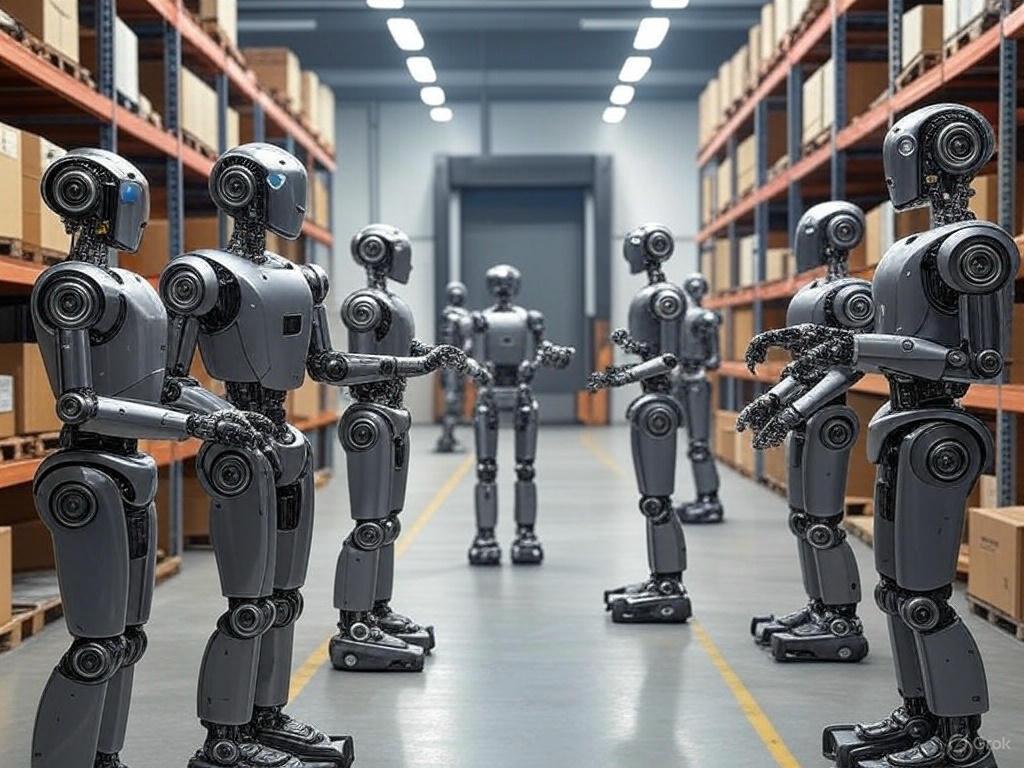The integration of artificial intelligence (AI) in warehouse management is transforming how businesses handle inventory, streamline operations, and meet customer demands. By leveraging AI-powered tools, warehouses can optimize processes, reduce costs, and enhance efficiency. This article explores the role of AI in warehouse management, its key applications, and the benefits it brings to modern logistics.
What is AI in Warehouse Management?
AI in warehouse management refers to the use of advanced algorithms, machine learning, and data analytics to automate and improve warehouse operations. From inventory tracking to demand forecasting, AI systems analyze vast amounts of data to make real-time decisions, enabling businesses to operate more effectively. These technologies help warehouses adapt to the growing complexities of supply chains and e-commerce demands.
Key Applications of AI in Warehouse Management
1. Inventory Management
AI-powered systems provide real-time visibility into inventory levels, ensuring accurate tracking and reducing the risk of overstocking or stockouts. Machine learning algorithms analyze historical data and predict future demand, enabling warehouses to maintain optimal stock levels. This minimizes waste and ensures products are available when needed.
2. Predictive Analytics for Demand Forecasting
AI algorithms process data from various sources, such as sales trends, seasonality, and market conditions, to forecast demand accurately. By anticipating customer needs, warehouses can plan inventory, allocate resources, and adjust staffing levels, improving overall efficiency.
3. Automated Picking and Packing
AI-driven robotic systems and automated guided vehicles (AGVs) streamline picking and packing processes. These systems use computer vision and machine learning to identify, sort, and package items with precision, reducing human error and speeding up order fulfillment.
4. Warehouse Layout Optimization
AI analyzes warehouse layouts and product placement to optimize space utilization. By determining the most efficient storage configurations, AI reduces travel time for workers and robots, improving productivity and minimizing operational delays.
5. Quality Control
AI-powered vision systems inspect products for defects or damage, ensuring only high-quality items reach customers. These systems can detect issues faster and more accurately than manual inspections, enhancing customer satisfaction and reducing returns.
6. Route Optimization for Logistics
AI optimizes delivery routes by analyzing traffic patterns, weather conditions, and delivery schedules. This ensures faster and more cost-effective transportation, improving last-mile delivery and customer experience.
Benefits of AI in Warehouse Management
Increased Efficiency
AI automates repetitive tasks, such as sorting, scanning, and data entry, allowing workers to focus on higher-value activities. This leads to faster processing times and improved throughput in warehouse operations.
Cost Reduction
By optimizing inventory, reducing errors, and streamlining logistics, AI helps warehouses cut operational costs. Predictive maintenance powered by AI also minimizes equipment downtime, further lowering expenses.
Enhanced Accuracy
AI systems reduce human errors in tasks like inventory tracking, order picking, and quality control. This improves order accuracy and reduces costly mistakes, such as shipping incorrect items.
Scalability
AI solutions are highly adaptable, allowing warehouses to scale operations during peak seasons or rapid growth. Automated systems can handle increased order volumes without compromising efficiency.
Improved Customer Satisfaction
Faster order processing, accurate deliveries, and high-quality products lead to better customer experiences. AI enables warehouses to meet rising consumer expectations for quick and reliable service.
Challenges of Implementing AI in Warehouse Management
While AI offers significant advantages, its implementation comes with challenges. High initial costs for AI systems and infrastructure can be a barrier for smaller businesses. Additionally, integrating AI with existing warehouse management systems may require technical expertise and time. Workforce training is also essential to ensure employees can work alongside AI technologies effectively.
The Future of AI in Warehouse Management
As AI technology advances, its role in warehouse management will continue to grow. Emerging trends, such as autonomous drones for inventory checks and AI-powered chatbots for customer service, are set to further revolutionize the industry. Additionally, the integration of AI with Internet of Things (IoT) devices and 5G networks will enable faster data processing and real-time decision-making.
Conclusion
AI in warehouse management is reshaping the logistics landscape by driving efficiency, reducing costs, and improving customer satisfaction. From inventory optimization to automated picking, AI-powered solutions are helping warehouses stay competitive in a fast-paced market. As technology continues to evolve, businesses that adopt AI will be better positioned to meet the demands of modern supply chains and deliver exceptional value to customers.

